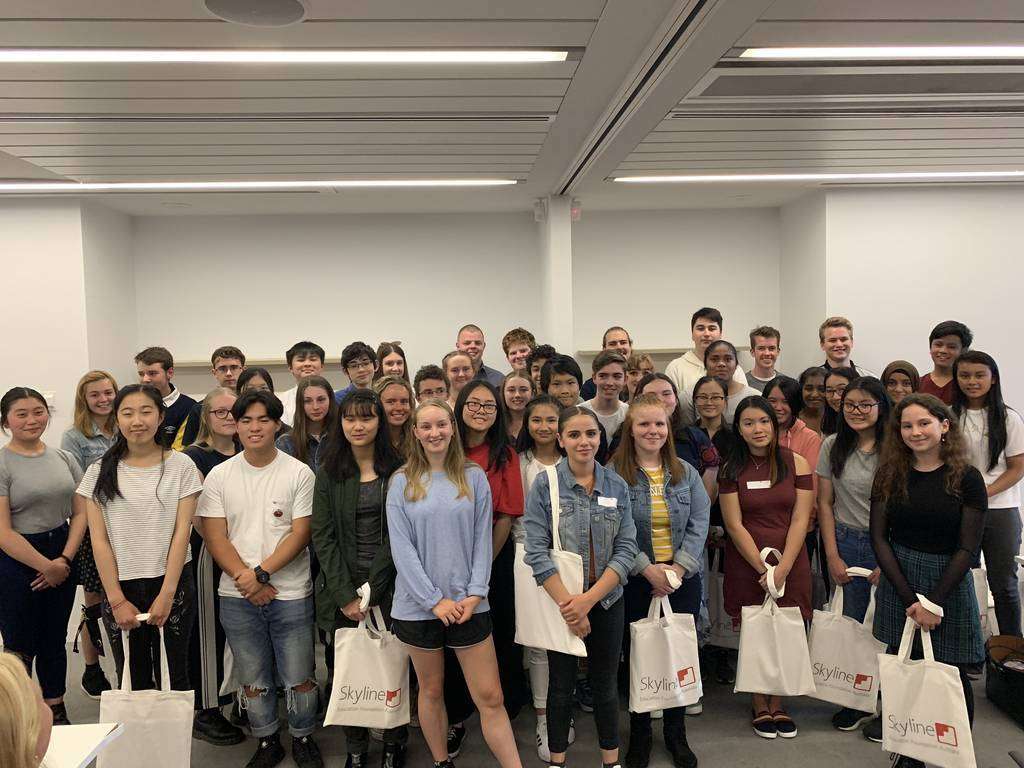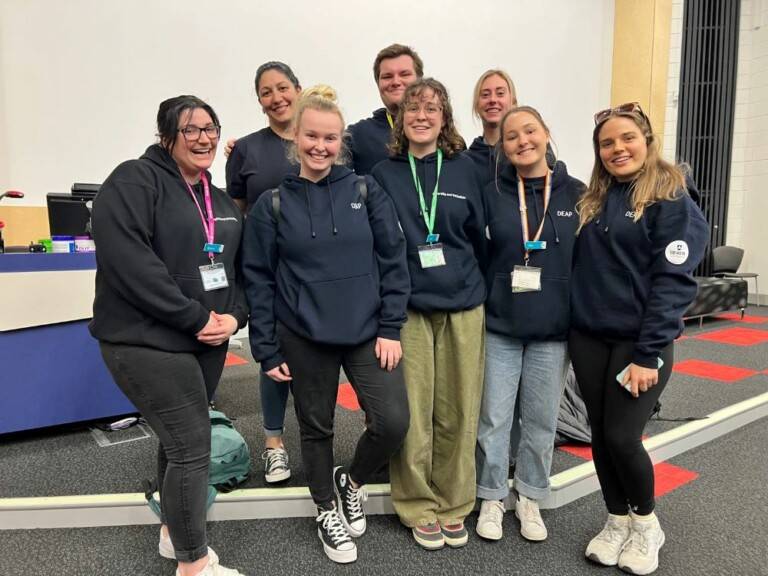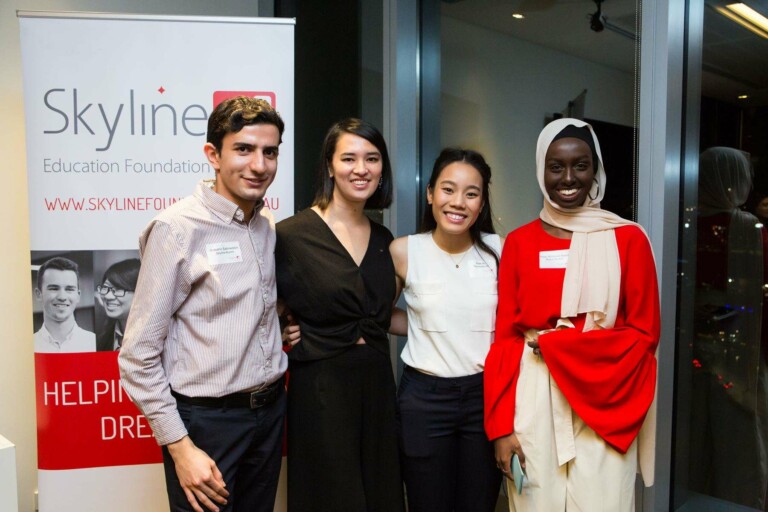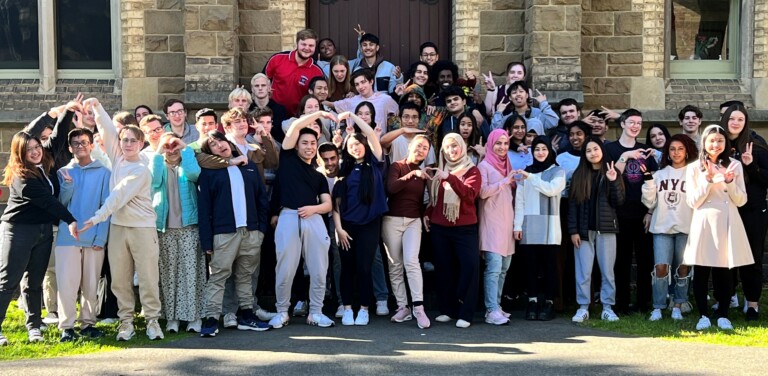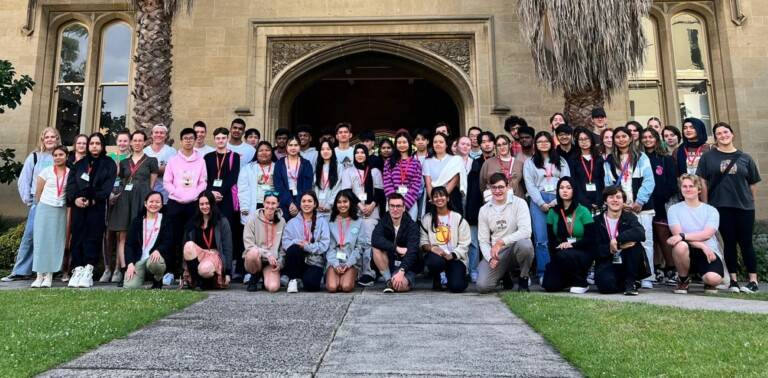Pathways and taking the long way round
– Dr Elizabeth Hartnell-Young
For most people, their career trajectory does not resemble a rocket heading for the moon. A focus on pathways – including sideways steps through study and employment – can lead to a fulfilling life experience. The 2020 Social Return on Investment (SROI) analysis found that the Skyline Program ‘expanded further education and employment pathways’ for participants (Think Impact, 2020). Often it is a matter of raising awareness of opportunities that students, parents and schools might not know about. One graduate reported that ‘Skyline has helped me to better understand the options and pathways, as well as helping me develop and better understand my own capabilities’ (Phillips & Phillips, 2021).
In recent years, Skyline graduates have entered several of the Victorian universities to start courses ranging from Sciences, Arts, Biomedicine, Engineering, Law and Education. Some have changed their original intentions before applying as a result of Skyline helping them identify their passion. For example, from psychology to acting, from medicine to software engineering, and from dentistry to teaching: all actual examples from Skyliners.
For some, the cost of a particular degree can be prohibitive, or their VCE results might be disappointing, but fortunately there are alternative pathways to their dreams. Over time, for example, TAFE courses articulate into university levels.
Sideways moves
A career trajectory can meander like a slow river, rather than heading straight up. Think lattice, not ladders. Like Ash Barty, who left tennis in her twenties while she was at the top of her game, it’s OK to move sideways.
Brian Andreas captured this beautifully in his line drawing (Andreas, 1996).

Some graduates make a change after commencing their tertiary course. Ormond College alumnus Hamish Taylor spoke recently at the College, in the University of Melbourne:
Ormond attracts people who are incredibly driven and by all conventions are successful, and we are right to celebrate them…But we should also celebrate those who take the long way round, and who take the meandering path and march to the beat of their own drum.
If you’ve been to Hamilton, the musical, you might have seen Dr Shewit Belay (@shewit.belay). She is a singer who loves R&B, funk and soul. Shewit migrated from Eritrea to Australia with her family when she was five, and was on stage in a school talent show when she was seven. Recently she graduated as a doctor (MBBS) from James Cook University in Qld, and she is currently performing in the Melbourne production of Hamilton, even though she didn’t study musical theatre.
Another doctor, Mark Hartnell, was selected for an accelerated program for gifted students at school, and was encouraged to study medicine. Dr Hartnell is now Deputy Director of Emergency at Ballarat Health Services. But it was certainly not a straightforward journey, as he explains:
I reckon I’ve always made big decisions the same way. They are often made at the last minute while absorbing alternatives approaching a deadline, they are then sudden, and I can only really articulate why later, if I’m lucky. In hindsight most of these big decisions look good (I’ve had a handful of happy career accidents and I’ve seized some opportunities) and I can even make it sound like there’s a decent method (it’s a conscious decision to get as much information and perspective). I practice Lean Thinking style ‘just in time’ management – my left and right brains have a magical interaction and the verbalising comes later – but I can only pity the family and friends trying to guide me in my younger years.
The accelerated program should have meant Mark could finish six years of high school in four, but he wanted to take an extra year. He studied 8 or 9 Year 11 subjects and he’s proud to say ‘I did alright at Year 12 Art’. After gaining a high score in VCE, he continued to meander through university:
The decision to do medicine looked good from the outside but was almost random. It was something to aim for in Year 12, wanting to be a neurologist based on reading The Man Who Mistook His Wife for a Hat: it sounded interesting. One decision that might not have looked so good at the time was doing a year of Arts after 1st year Med, only finishing a few of the subjects. I came back to medicine but twice went extremely close to dropping out. Being uncontactable in Central America when I should have been sitting a supplementary exam looked particularly poorly thought out.
Mark finished his medical degree, and while it has been great, he says:
‘I’ve never felt like it uses all my talents and often think about the alternatives.
I struggled with my junior years as a doctor, trying to be everything to everybody. That’s not a useful thing for a junior doctor, who needs to be more of a smoothly functioning cog in the system. It took me two and a half years to realise Emergency Medicine was my thing.I’ve educated others across the medical spectrum (undergraduate to specialists in training) and contributed heavily to setting up an undergraduate EM course. I am a reluctant leader but have become a deputy director of the department I work in. I work on better ways to teach skills in dealing with challenging patient interactions. I can’t say any of the meandering was scientifically designed to get me here, but it couldn’t have worked any other way…I’ll probably have another career at some point, most likely nothing to do with healthcare’.
What is success?
Ashleigh Streeter-Jones has a BA (Hons) in Politics and International Relations from Monash University, and a Masters in Diplomacy from the ANU. Not yet 30, she certainly seemed to be on that rocket to the moon, her CV packed with achievements. She is the Founder of Raise Our Voice Australia, an initiative to boost the number of diverse young female and non-binary voices in public decision making. She was ACT Woman of the Year in 2018, one of the Australian Financial Review’s 100 Women of Influence in 2019, and one of the Forbes 30 Under 30 social entrepreneurs. In 2021 she was a delegate to the World Economic Forum.
Ashleigh says:
Take opportunities! I’ve always been someone who plans, but the best opportunities I’ve been given have been the ones I didn’t anticipate. That’s not to say that you should abandon your plans, it’s still good to know what direction to move in, but keep an open mind. And, if the opportunities aren’t coming to you, dream big and make your own!
She admits, though, that being perceived as a ‘successful young person’ is a lot of pressure, particularly with social media. She describes herself as a ‘tired activist’, and says ‘There is so much pressure to be exceptional, but nothing created that pressure more than my expectations of myself.’
What can schools and universities do?
At the school level, a pathways lens was implemented in Ontario, Canada, involving collaborative partnerships (Harild & Sharratt, 2015). Teachers, education departments, unions, corporations and small business worked over a long period on planning with industry sectors, tertiary institutions to learn more about each other’s needs and requirements. By stepping into each other’s worlds, building bridges and learning more about the potential pathways, teachers, students and community partners can achieve realistic goals and remove roadblocks to the journey.
Patfield (2021) reports that 310 students in 30 NSW government schools were interviewed about their attitudes to higher education. While some valued higher education as a means to a job, those in lower socio-economic circumstances tended to focus on the intrinsic value of education. Many of these saw university as a place to meet people with similar interests and passions: as Skyline might say, ‘to find your tribe’. The researchers argue that equity is much more than being job ready, and that universities should be aware of students’ complex intrinsic motivations.
Learning Creates Australia is an organisation also focused on building a new approach to recognising learning that will strengthen agency in young people and help them to effectively navigate and access a range of pathways beyond school. This requires seriously considering what success actually means and how it can be better measured (Milligan et al., 2020).
After all, a pathway is more than a track to a job: it is a fulfilling life journey.
References
- Andreas, B. (1996). Strange Dreams: Collected stories and drawings (Vol. 4). Decorah, IA: Story People.
- Harild, G., & Sharratt, L. (2015). From Good to Great: Recalculating the route to career readiness through a pathways lens. Principal Leadership, 54-57. Retrieved from https://www.lynsharratt.com/_files/ugd/a97117_b8be3ccdf6ab413e8ad1b6f99b46869d.pdf
- Milligan, S., Luo, R., Kamei, T., Rice, S., & Kheang, T. (2020). Recognition of learning success for all: Ensuring trust and utility in a new approach to recognition of learning in senior secondary education in Australia. . Retrieved from Melbourne, Victoria: https://www.learningcreates.org.au/media/attachments/2020/12/07/lca_success_paper_re-design_final9r2.pdf
- Patfield, S. (2021). Fair access to university depends on more than making students ‘job-ready’. Retrieved from https://theconversation.com/fair-access-to-university-depends-on-much-more-than-making-students-job-ready-171674
- Phillips, I., & Phillips, J. (2021). Skyline Education Foundation Australia Evaluation Update
Think Impact. (2020). Growing value in uncertain times: A Social Return on Investment Evaluation of Skyline Education Foundation activities. Retrieved from https://skylinefoundation.org.au/social-return-on-investment/

